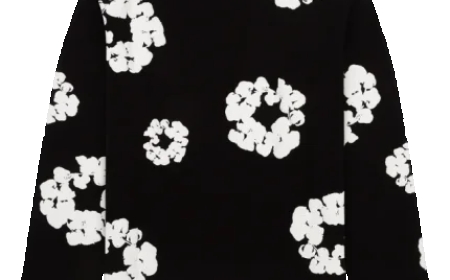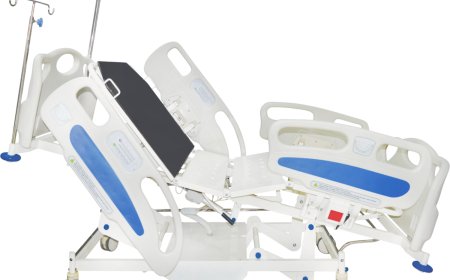How to Shop Handmade Goods at the Mayfest Vendor Booths
How to Shop Handmade Goods at the Mayfest Vendor Booths Mayfest is more than just a seasonal celebration—it’s a vibrant gathering of artisans, craftspeople, and creative entrepreneurs who bring their handmade goods to life under open skies and bustling canopies. For visitors, it’s an immersive experience where every booth tells a story, every product carries a signature, and every purchase support
How to Shop Handmade Goods at the Mayfest Vendor Booths
Mayfest is more than just a seasonal celebration—it’s a vibrant gathering of artisans, craftspeople, and creative entrepreneurs who bring their handmade goods to life under open skies and bustling canopies. For visitors, it’s an immersive experience where every booth tells a story, every product carries a signature, and every purchase supports an individual’s passion. Shopping for handmade goods at Mayfest vendor booths is not merely transactional; it’s an act of connection, discovery, and community building. Unlike mass-produced items found in retail chains, handmade goods at Mayfest are crafted with intention, often using traditional techniques, locally sourced materials, and personal design elements that reflect the maker’s heritage, values, and vision.
Yet, navigating dozens of booths filled with pottery, textiles, jewelry, woodwork, candles, and more can feel overwhelming—especially if you’re unfamiliar with the culture of artisan markets. Many shoppers leave without finding the perfect piece, or worse, they buy impulsively and later regret it. This guide is designed to transform your Mayfest experience from chaotic to intentional. Whether you’re a first-time attendee or a seasoned market-goer, this tutorial will equip you with the knowledge, strategies, and mindset to shop wisely, meaningfully, and joyfully at Mayfest vendor booths.
By the end of this guide, you’ll understand how to identify authentic craftsmanship, engage respectfully with makers, evaluate quality, negotiate fairly (when appropriate), and leave with treasures that carry lasting value—not just monetary, but emotional and cultural. This isn’t about spending more; it’s about spending smarter and deeper.
Step-by-Step Guide
1. Research the Event and Vendor List Ahead of Time
Before you even pack your tote bag, spend 15–30 minutes reviewing the official Mayfest website or event app. Most organized festivals publish a list of participating vendors weeks in advance. Look for categories like “ceramics,” “handwoven textiles,” “metalwork,” or “natural skincare” to identify booths that align with your interests.
Many vendors maintain Instagram accounts, Etsy shops, or personal websites. A quick search of their booth number or name will reveal their aesthetic, product range, and even pricing. This pre-research helps you prioritize which booths to visit first, especially if the event is large or you have limited time. It also prevents you from missing out on makers you’ve admired online but didn’t realize would be at Mayfest.
2. Set a Budget and Stick to It
Handmade goods vary widely in price—from $5 hand-stamped bookmarks to $300 hand-thrown ceramic dinnerware sets. Before entering the festival grounds, decide on a realistic spending limit. Consider this: you’re not just buying an object; you’re investing in time, skill, and story. A $75 hand-carved wooden bowl may seem expensive next to a $20 plastic one, but its durability, artistry, and origin make it a far greater value.
Use cash or a prepaid card to physically limit your spending. Many artisans prefer cash transactions, and having a set amount in hand reduces the temptation to overspend. Divide your budget into categories: $50 for jewelry, $40 for home décor, $30 for gifts. This structure turns impulse buys into thoughtful selections.
3. Arrive Early or Plan for Off-Peak Hours
Early morning or late afternoon visits offer distinct advantages. Arriving at opening time means fewer crowds, cooler temperatures, and the best selection of inventory. Vendors often display their most unique or high-demand items first, and you’ll have the opportunity to speak with them before they’re overwhelmed with questions.
Alternatively, visiting during the final hour allows you to negotiate gently on pricing. Many makers are eager to sell remaining inventory rather than pack it up and carry it home. While not all vendors will discount, some will offer a small reduction or bundle items—especially if you’re buying multiple pieces.
4. Approach Booths with Curiosity, Not Pressure
When you approach a vendor booth, pause. Observe. Look at the materials, textures, and details. Notice if the pieces are labeled with names, materials, or techniques used. Many artisans take pride in explaining their process. Don’t feel obligated to buy immediately—your presence and interest are valuable.
Start with a simple, open-ended question: “What inspired this design?” or “How long does it take to make one of these?” This invites storytelling and helps you connect with the maker’s intent. Avoid questions like, “How much is this?” right away. That can shut down conversation. Let pricing come naturally after you’ve appreciated the craft.
5. Examine Quality and Craftsmanship
Handmade doesn’t automatically mean high-quality. Look for signs of thoughtful construction:
- Consistency in finish: Are edges smooth? Are seams even? Are glazes applied evenly?
- Material integrity: Is the wood sanded and sealed? Is the fabric tightly woven? Is the metal free of sharp burrs?
- Attention to detail: Are tiny embellishments placed with care? Are labels or stamps legible and well-positioned?
- Functionality: If it’s a functional item—a mug, a bowl, a bag—test its balance, weight, and usability. Does the lid fit? Does the strap feel comfortable?
Don’t hesitate to ask: “Is this glazed food-safe?” or “Will this fade in sunlight?” Reputable makers welcome these questions. They reflect your respect for their work and your desire to use the piece properly.
6. Ask About the Maker’s Process and Story
The most valuable aspect of handmade goods is the story behind them. Ask: “How did you learn this technique?” or “Where do you source your materials?” Many artisans use reclaimed wood, organic dyes, or recycled metals. Others draw inspiration from family traditions, regional folklore, or personal journeys.
Listening to these stories transforms your purchase from a commodity into a keepsake. You’re not just owning a ceramic vase—you’re owning a piece of someone’s life. This connection often deepens your appreciation and makes the item more meaningful in your home.
7. Avoid “Too Good to Be True” Deals
If a handmade item is priced dramatically lower than similar pieces at other booths, pause. Handmade goods require hours of labor, specialized tools, and quality materials. A $10 hand-painted scarf made with organic cotton and natural dyes is unlikely unless the maker is subsidizing it or using low-grade materials.
Be wary of vendors who claim “everything is handmade” but have identical items in multiples of 20 or more. True handmade items are inherently unique. Even if a maker produces a series, each piece will have slight variations in color, texture, or form. Uniformity on this scale often indicates machine production or outsourcing.
8. Request Customization When Possible
Many Mayfest vendors welcome custom orders. If you see a piece you love but want it in a different color, size, or engraving, ask: “Would you be open to making a variation?” Some makers will accommodate small requests at no extra cost, especially if they’re already working on a similar design.
Customization is a win-win: you get a one-of-a-kind item, and the maker gains a loyal customer. If they agree, get their contact info and follow up after the event. Many artisans offer post-festival ordering via email or social media.
9. Pay with Intention and Express Gratitude
When you decide to purchase, pay with a smile and a word of thanks. Handmade goods are not sold by faceless corporations—they’re sold by individuals who poured their soul into their work. A simple “Thank you for sharing your art” means more than you know.
If you’re paying with cash, count your change slowly and deliberately. If you’re using a card, ask if they have a QR code for digital tips. Many artisans appreciate small additional gestures, especially if they’re covering their own booth fees and travel costs.
10. Document Your Purchases and Follow Up
Take a photo of each item with its vendor card or booth number. This helps you remember who made it, especially if you’re buying multiple gifts or pieces. Many vendors include their website, Instagram handle, or email on a small card. Save these for future reference.
After Mayfest, consider leaving a review on their website or tagging them in a photo of your purchase on social media. Artisans rely on word-of-mouth and digital exposure to grow. Your support doesn’t end at the checkout—it continues online.
Best Practices
Respect the Maker’s Space
Vendor booths are often small, cluttered, and personally organized. Avoid leaning on displays, touching items without permission, or rearranging products. Many handmade goods are fragile, and even a slight nudge can cause damage. Always ask before handling something, especially ceramics, glass, or woven textiles.
Don’t Haggling Aggressively
While some artisans may offer discounts at the end of the day, aggressive bargaining is inappropriate. Handmade goods are priced based on material costs, labor hours, booth fees, and market demand. A $120 handwoven rug isn’t overpriced—it reflects 40 hours of weaving, dye mixing, and finishing. Respect that value.
If you feel a price is too high, politely say, “I love this, but it’s just outside my budget. Would you ever consider a smaller version or a different material?” This opens dialogue without confrontation.
Support Local and Sustainable Practices
Look for vendors who use ethically sourced, recycled, or renewable materials. Ask if they package items in plastic-free or compostable materials. Many Mayfest artisans are committed to zero-waste practices. Supporting them reinforces values beyond aesthetics.
Bring Reusable Bags and Cash
Many vendors don’t offer bags, or charge for them. Bring your own tote or backpack. It’s eco-friendly and practical. Also, carry small bills and coins. Cash transactions are faster, and many makers don’t have card readers or pay high processing fees.
Be Patient with Lines and Delays
Popular booths may have lines. Don’t rush or complain. These artisans are often working alone, juggling customers, inventory, and payments. Your patience is appreciated. Use the wait time to admire other booths or take photos.
Don’t Photograph Without Permission
While it’s tempting to snap photos of beautiful items, always ask before photographing a vendor’s work—especially if they’re actively working or if the piece is part of a new collection. Some makers don’t want images shared online before their official launch. Respect their creative timing.
Leave Feedback, Not Just Reviews
If you love a piece, tell the maker why. “The texture of this clay reminds me of my grandmother’s pottery” or “I’ve never seen a bracelet like this—it feels alive.” Specific feedback helps artisans refine their craft and feel seen. Generic “great job!” comments are nice, but personal notes are transformative.
Buy One, Gift One
Mayfest is a perfect place to practice mindful gifting. Buy one item for yourself and another for a friend. It doubles your impact and spreads the joy of handmade culture. Choose pieces that reflect the recipient’s personality—a bold necklace for the artist friend, a quiet ceramic candle holder for the meditative one.
Don’t Compare Prices to Retail Chains
Handmade goods aren’t meant to compete with Target or Amazon. They exist in a different economy—one based on relationship, not volume. Comparing a $40 hand-thrown mug to a $12 mass-produced one misses the point. You’re paying for artistry, not just utility.
Tools and Resources
Mayfest Official App or Website
Most major Mayfest events have an official app or mobile-friendly website with vendor maps, booth numbers, and bios. Download it before you go. These tools often include filters by category (e.g., “jewelry,” “food,” “children’s items”) and real-time updates on booth closures or special demonstrations.
Smartphone Camera and Notes App
Use your phone to take close-up photos of items you like, along with the vendor’s name or booth number. Jot down quick notes in your phone’s notes app: “Blue glaze, wood handle, $65, @makenamespottery.” This prevents post-event confusion and helps you follow up later.
Portable Wallet or Money Belt
Keep cash and cards secure with a hidden money belt or compact wallet that fits in your front pocket. Avoid large purses that can be easily snagged in crowds. Prioritize safety so you can focus on the experience.
Reusable Tote Bags and Folding Backpacks
Bring at least one sturdy, foldable tote bag. Look for ones made from organic cotton or recycled materials. Some artisans sell their own reusable bags—consider buying one as a souvenir.
Hand Sanitizer and Wet Wipes
Outdoor events mean dust, dirt, and crowds. Keep your hands clean, especially before handling ceramics or food-safe items. Wet wipes also help clean fingerprints off glass or metal pieces before purchase.
Comfortable Footwear
You’ll be walking on grass, gravel, or pavement for hours. Wear supportive, broken-in shoes. Blisters will ruin your day. Bring a small foot cushion or insole if you’re prone to discomfort.
Water Bottle and Snacks
Stay hydrated and energized. Many vendors sell food, but prices can be high. Bring your own water and a granola bar. This keeps you focused on shopping, not hunger.
Small Notebook and Pen
Some makers don’t have digital payment systems. A notebook helps you track purchases, names, and contact info. Jotting down details by hand also reinforces memory and appreciation.
Online Communities and Forums
Join Facebook groups or Reddit threads dedicated to Mayfest or handmade markets in your region. Past attendees often share tips, vendor recommendations, and even photos of items sold. You might discover hidden gems before the event even begins.
Instagram and Pinterest
Search hashtags like
Mayfest2024, #HandmadeAtMayfest, or #[City]Mayfest. These platforms are goldmines for visual inspiration and vendor discovery. Many artisans post countdowns, sneak peeks, or live videos leading up to the event.
Real Examples
Example 1: The Ceramicist Who Turned a Grief into a Collection
At last year’s Mayfest, a vendor named Lena sold a series of small, asymmetrical mugs with deep indigo glazes and rough, unpolished bases. She didn’t say much at first. When asked, she shared that her husband had passed the year before, and she began throwing clay to cope. Each mug represented a month of her healing journey. One had a tiny crack she left visible—“a reminder that beauty doesn’t need to be perfect.”
A visitor bought two mugs—one for herself, one for her mother, who had also lost a spouse. The buyer later emailed Lena to say the mugs now sit on their kitchen windowsill, catching morning light. “They’re not just cups,” she wrote. “They’re quiet companions.” Lena still keeps that email saved.
Example 2: The Weaver Who Used Recycled Silk Scarves
Juanita, a textile artist from Oaxaca, wove intricate patterns using scraps of vintage silk scarves collected from thrift stores. Each scarf was hand-dyed with cochineal and indigo. Her booth had a sign: “No two pieces are alike—each thread has a past.”
A tourist from Chicago bought a small wall hanging for $85. She later framed it and hung it in her home office. Every time a client asked about it, she told Juanita’s story. Within months, three other clients visited Juanita’s Etsy shop after hearing the tale. Juanita credited that one purchase with doubling her online sales.
Example 3: The Woodworker Who Taught a Child to Carve
A 72-year-old woodworker, Robert, brought a table of small animal figurines carved from reclaimed walnut. He offered a free 10-minute carving demo each hour. A 9-year-old boy watched for 45 minutes, then asked if he could try. Robert handed him a block and a gentle gouge. The boy carved a lopsided turtle.
The boy’s mother bought the turtle for $20 and Robert’s “Beginner’s Carving Kit” for $45. A year later, the boy won a school art contest with a carved owl. His teacher wrote to Robert, who sent a handwritten note and a free new carving block. The boy still visits Mayfest every year.
Example 4: The Soap Maker Who Sourced Ingredients from Her Garden
Maya sold lavender and calendula soaps made with oils pressed from plants grown in her backyard. Each bar came with a small tag: “Lavender picked July 3, 2023. Bees from the hive on the north slope.”
A woman bought three bars for her mother, who had eczema. After three weeks of use, her mother’s skin improved. She emailed Maya with photos and a thank-you note. Maya mailed her a free bar of chamomile soap with a note: “For the healing.”
FAQs
Can I negotiate prices at Mayfest vendor booths?
Some vendors may offer a small discount at the end of the day, especially if they’re packing up. However, aggressive haggling is discouraged. Handmade goods reflect real labor and material costs. Instead of asking for a lower price, ask if they offer bundles, gift sets, or future discounts via email.
Are all items at Mayfest truly handmade?
Most are, but not all. Reputable festivals vet vendors, but it’s still wise to ask: “Is this made entirely by you?” or “Do you outsource any part of the process?” If a vendor hesitates or gives a vague answer, trust your instincts.
What if I want to buy something but can’t afford it right now?
Many artisans offer layaway or post-event ordering. Ask: “Do you take deposits?” or “Can I reserve this and pay later?” Some even allow you to email them after the event. Don’t assume they won’t help—many makers want their work to find the right home, even if it takes time.
How do I know if a piece is worth the price?
Consider: How much time was invested? What materials were used? Is the craftsmanship consistent? Does it bring you joy? Handmade value isn’t just in dollars—it’s in memory, meaning, and longevity. A well-made ceramic bowl can last decades. A plastic one lasts months.
Should I tip the vendor?
Tipping isn’t expected, but it’s appreciated. If you feel moved to do so, leave a $5–$10 cash tip with your purchase. Many vendors work alone, cover their own expenses, and don’t profit much. A small tip says, “I see your effort.”
What if I break something I bought?
Accidents happen. Most makers understand. If you break a piece, contact the vendor honestly. Many will offer a repair, discount on a replacement, or even a refund if it’s a significant loss. Artisans value honesty more than perfection.
Can I bring my kids to the vendor booths?
Yes—but supervise them closely. Handmade items are often fragile and expensive. Teach children to ask before touching and to walk slowly. Many vendors love sharing their craft with kids and may offer a small activity or sample.
Do vendors accept credit cards?
Many do now, but not all. Always carry cash. Small bills and coins make transactions smoother. Some vendors charge extra for card payments due to processing fees.
How do I care for my handmade purchases?
Ask the maker! Each material requires different care. Ceramic? Hand wash only. Wood? Oil annually. Textiles? Air dry. Natural soaps? Keep dry between uses. The vendor’s care instructions are your best guide.
Can I return or exchange handmade items?
Most handmade goods are final sale due to their unique nature. Always confirm the vendor’s policy before purchasing. If you’re unsure, ask: “Is this item returnable if it doesn’t work for me?”
Conclusion
Shopping for handmade goods at Mayfest vendor booths is not a chore—it’s a ritual. It’s a chance to slow down, connect, and engage with the human hands behind the objects we use every day. In a world saturated with mass-produced, disposable items, choosing handmade is a quiet act of rebellion: a declaration that beauty, meaning, and integrity matter.
This guide has walked you through the practical steps—from researching vendors to documenting your purchases—and the deeper practices—respect, curiosity, gratitude—that turn a simple transaction into a meaningful exchange. You now know how to spot authenticity, ask the right questions, and honor the maker’s labor.
Remember: the most valuable thing you take home from Mayfest isn’t the ceramic vase, the woven scarf, or the carved spoon. It’s the memory of the person who made it—their story, their passion, their quiet pride. That’s what lasts. That’s what transforms a purchase into a legacy.
Next time you attend Mayfest, go not just to shop—but to witness, to listen, to celebrate. Let your hands hold more than objects. Let them hold stories.





































